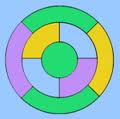
“Learning never exhausts the mind.” – Leonardo Di Vinci
This weeks twister is a real thinking puzzle that’s really pretty easy to understand. There will be a series of statements and all you have to do is say whether each statement is true or false. Well, there’s just a little more to it, if you say the statement is false, then you have to give a counter example that shows why the statement is false.
Here’s an example to show you how it works. The statement is
All numbers are greater than 5
This is obviously FALSE, and a counter example to this statement is 3, because it’s a number that’s NOT greater than 5. So the number 3 disproves the statement. The number 3 is not the only counter example to this statement. Other counter examples are 2, 0, -13 or even 4.1267.
Below is a five statement counter example game. Within this game four of the five statements are FALSE, so only one is TRUE (so it doesn’t have a counter example).
1. No state in the United States begins and ends with the same letter.
2. All triangles have three sides.
3. All even numbers end in 2, 4, 6 or 8.
4. If a number is not negative then it is positive.
5. All four-sided shapes are squares.
These statements are from varied subjects (spelling, geometry and arithmetic). So, if you want to make your own counter example statements, any topic will work (not just math). Regardless of the subject matter, make it fun. Challenge yourself and others to think beyond your/their immediate response. “I don’t know” is not allowed – thinking is encouraged. Originality and accomplishment should be rewarded.
I love these puzzles because they develop thinking while encouraging reading and understanding. Good Luck and pass the puzzles onto others who may enjoy them! Also, click “Like” below if you like it!


